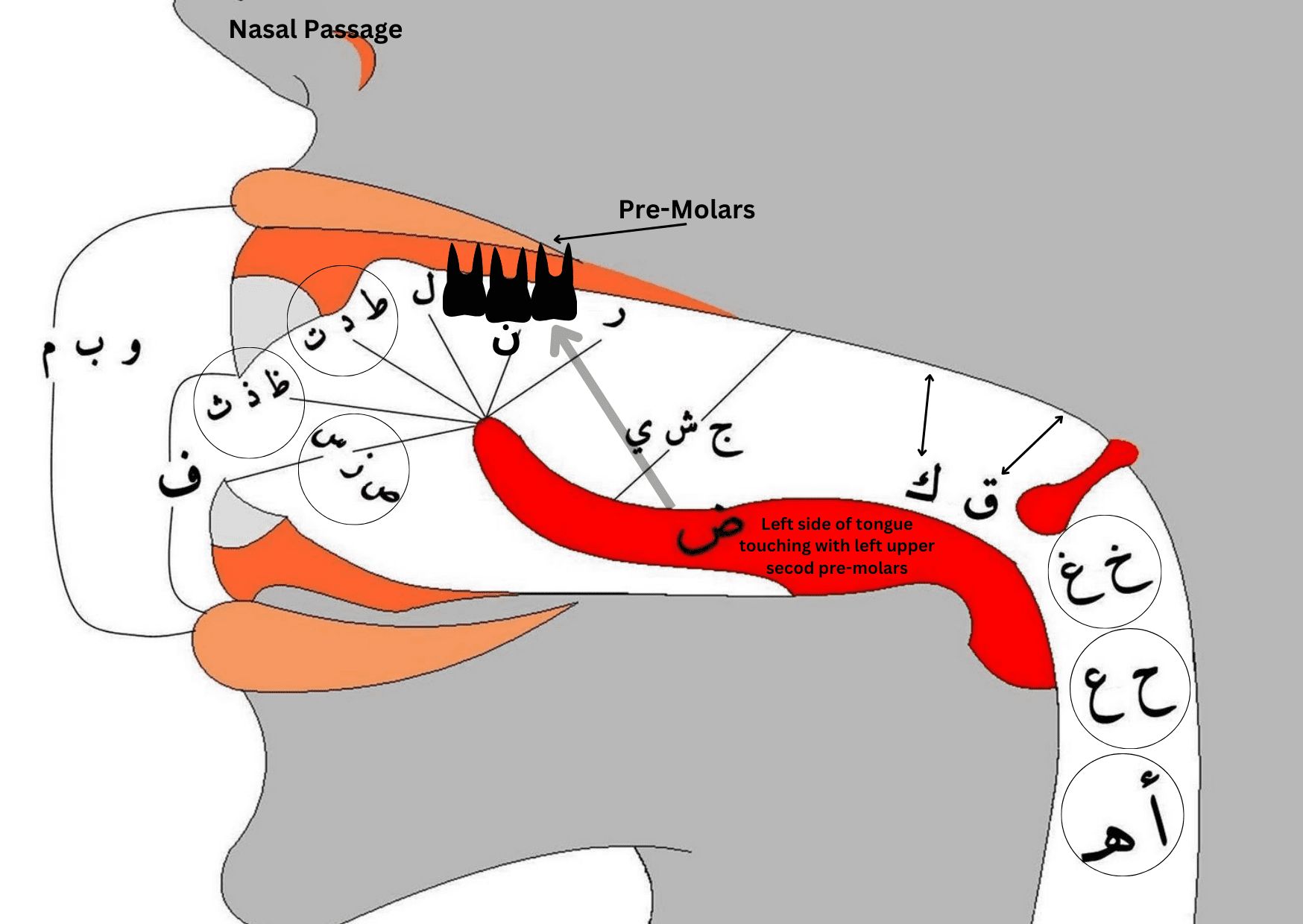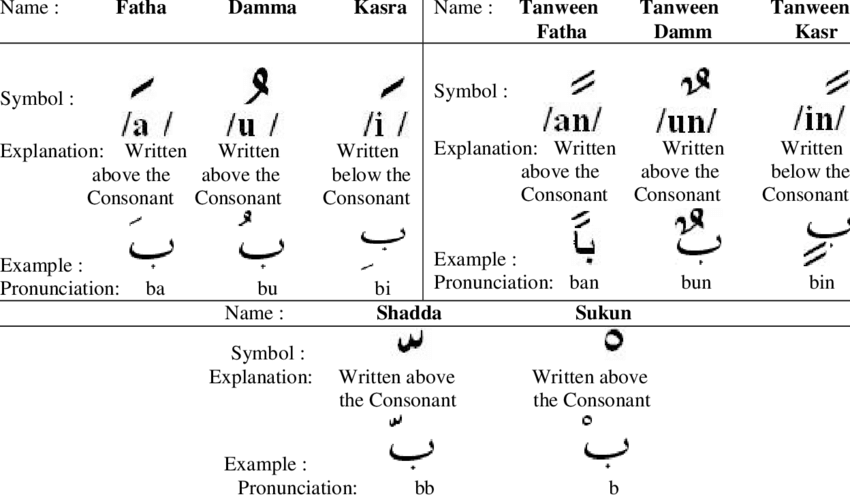Arabic
Nahw and sarf are two Arabic sciences that are often studied together and are essential for accurate reading, writing, and speaking Arabic:
-
Nahw
The study of syntax, or the rules for arranging words, phrases, clauses, and sentences. The word nahw literally means “way” or “manner”.
-
Sarf The study of morphology, or how to assign meanings to words through patterns and endings.
Nahw and sarf are often studied together because they are different but inseparable.
Nahw is the Arabic word for syntax, which is the study of how words, phrases, clauses, and sentences are arranged to create well-formed sentences. The word nahw literally means “way” or “manner”.
Here are some key concepts in Nahw:
- Nouns, verbs, and particles: Nouns are names of things, verbs indicate actions or states, and particles link words together.
- Subject and predicate: Understanding the subject and predicate of a sentence helps with constructing sentences correctly.
- Verb conjugation: Understanding verb conjugation helps with expressing oneself fluently.
- Agreement: Understanding agreement helps with expressing oneself fluently.
- Word order: Understanding word order helps with constructing sentences correctly.
Nahw is one of the earliest sciences developed by Muslims. Abul Aswad al-Duali is often credited with organizing the rules of Arabic grammar.
Arabic grammar is complex and precise, and it focuses on both the form of words and their function in a sentence. Classical Arabic and Modern Standard Arabic have largely the same grammar, but colloquial spoken varieties can vary.
Khalifatullah is an Arabic term that means "vicegerent of God". It is associated with the following:
-
Divine leadership
According to Al Islam, Hazrat Adam was the first Prophet and Khalifatullah, appointed by God to guide humanity.
-
Ahmadiyya community
The Ahmadiyya community’s supreme leader is the Khalifatul Massih, who is considered to have infallible authority.
-
Khalifatullah: Reframing Ahmadiyya Doctrines
This book by Munir A. Azim and Fazil Jamal is about reframing Ahmadiyya doctrines. It includes 15 sermons by the Holy Imam that reframe the spiritual doctrines of the community.
-
Caliphate
Historically, caliphates were Islamic polities that developed into multi-ethnic empires. Some major caliphates include the Rashidun Caliphate (632–661), the Umayyad Caliphate (661–750), and the Abbasid Caliphate (750–1517).
The phrase “InsyaAllah. Wa minallahu taufiq” is a combination of two Arabic expressions commonly used in Islamic culture. Here is the breakdown:
-
“InsyaAllah” (إن شاء الله):
- Meaning: “If Allah wills.”
- Usage: It expresses the belief in the will and decree of Allah for the future. It is said when one hopes or plans to do something, acknowledging that ultimate control lies with Allah.
-
“Wa minallahu taufiq” (ومن الله التوفيق):
- Meaning: “And success is from Allah.”
- Usage: It emphasizes that any success or ability to achieve something is granted by Allah, acknowledging His role in all accomplishments.
Combined Meaning:
“InsyaAllah. Wa minallahu taufiq” can be understood as:
- “If Allah wills. And success is from Allah.”
It reflects humility and reliance on Allah in both planning and achieving. It is a phrase often used to express hope and trust in Allah’s guidance and support.
“Allahu yahdi man yasha’u wa-yudillu man yasha’u” is an Arabic phrase that translates to "God guides whomever He wills and lets go astray whomever He wills".
The phrase can also be interpreted as “God guides him that wills [to be guided] and let go astray him that wills [to go astray]”.
The word “yahdi” in the phrase means “is guided”.
“Haram alayk” is an Arabic phrase that means "forbidden to you". “Haram” is an Arabic word that means “forbidden” or “sinful”.
The Arabic phrase مَحَلَّهُ حَيْثُ أَحَلَّهُ (makhama haithu akhama) is a rhetorical and eloquent expression used in classical Arabic and Islamic jurisprudence. It literally means, “He placed it where it belongs” or “He judged where He decreed.”
“Wa salam alaykum wala ahli al-Quds al-mazlum” (وَسَلاَمٌ عَلَيْكُمْ وَلاٰ أَهْلِي الْقُدْسِ الْمَظْلُومِ) can be translated as:
“Peace be upon you and upon the oppressed people of Jerusalem (Al-Quds).”
This phrase expresses solidarity and peace with the people of Jerusalem, who are often referred to in contexts of struggle or oppression. “Al-Quds” refers to the holy city of Jerusalem, and “al-mazlum” means “the oppressed.”
The Arabs were proud of their language and believed it had no equal among the tongues of mankind. As befitting a proud people, they spent much effort trying to keep their basic language pure. Even after the Islamic conquests when foreign influences began to stealthily move in, scholars tried to stem this tide. Omar S. Pound in his book Arabic and Persian Poems in English writes:
The Arab prides himself on using the mot juste and in ancient times many an Arab scholar is reported to have travelled great distances to find out the exact meaning of a rare word used by an obscure Bedouin tribe. Often we read of guests from far-off lands being closely cross-examined on the use and meaning of a particular word found only in the guest’s tribe.
– Arabic Contributions to the Spanish Language and Culture - TeachMideast
In Arabic, "fatha," "kasra," and "damma" are the three short vowels, represented by diacritic marks above or below a letter, with "fatha" signifying the "a" sound, "kasra" the "i" sound, and "damma" the "u" sound respectively; essentially, they are the basic building blocks for proper pronunciation in Arabic.

“Ahle ilm” is an Arabic phrase that translates to ”people of knowledge". The word “ilm” is Arabic for “knowledge” and is emphasized in the teachings of Muhammad.
Explanation
Ilm is a broad concept that encompasses more than just the English word “knowledge”. The root word of ilm in Arabic, علم, is made up of the characters ع - ل - م. In Islam, ilm is considered to be of three types: information, natural laws, and knowledge by conjecture. The first two types are considered useful and obligatory to acquire.
Prophet Muhammed ﷺ teachings emphasized the importance of knowledge, as reflected in various hadiths attributed to him. One hadith states, “He who pursues the road of knowledge God will direct to the road of Paradise”.
The Arabic alphabet has 28 letters that are written from right to left. The letters are consonants, and there are no capital letters.
- Alif: ا (Alif)
- Ba: ب (Ba)
- Ta: ت (Ta)
- Tha: ث (Tha)
- Jeem: ج (Jeem)
- Haa: ح (Haa)
- Khaa: خ (Khaa)
- Dal: د (Dal)
- Dhal: ذ (Dhal)
- Ra: ر (Ra)
- Zay: ز (Zay)
- Seen: س (Seen)
- Sheen: ش (Sheen)
- Saad: ص (Saad)
- Daad: ض (Daad)
- Taa: ط (Taa)
- Thaa: ظ (Thaa)
- Ayn: ع (Ayn)
- Ghayn: غ (Ghayn)
- Fa: ف (Fa)
- Qaaf: ق (Qaaf)
- Kaaf: ك (Kaaf)
- Laam: ل (Laam)
- Meem: م (Meem)
- Noon: ن (Noon)
- Waw: و (Waw)
- Ya: ي (Ya)

Arabic Diacritics
wikipedia/en/Arabic_diacritics![]()
Arabic diacritics are called الحركات (al-ḥarakāt) in Arabic, which literally means “movements” or “motions.” They are also known as التشكيل (at-tashkīl), meaning “formation” or “vocalization,” and الضبط (aḍ-ḍabṭ), meaning “control” or “regulation.”
Main Diacritical Marks (الحركات الأساسية)
Short Vowels (الحركات القصيرة):
- الفتحة (al-fatḥah) - written as a small diagonal line above the letter (َ), represents the short “a” sound
- الضمة (aḍ-ḍammah) - written as a small “و” above the letter (ُ), represents the short “u” sound
- الكسرة (al-kasrah) - written as a small diagonal line below the letter (ِ), represents the short “i” sound
Long Vowels (الحركات الطويلة): These are formed by combining short vowels with specific letters:
- الألف (al-alif) - for long “ā” sound
- الواو (al-wāw) - for long “ū” sound
- الياء (al-yā’) - for long “ī” sound
Additional Diacritical Marks
السكون (as-sukūn) - written as a small circle above the letter (ْ), indicates the absence of a vowel
الشدة (ash-shaddah) - written as a small “w” shape above the letter (ّ), indicates gemination (doubling) of the consonant
التنوين (at-tanwīn) - nunation, which adds an “n” sound:
- تنوين الفتح (tanwīn al-fatḥ) - double fatḥah (ً)
- تنوين الضم (tanwīn aḍ-ḍamm) - double ḍammah (ٌ)
- تنوين الكسر (tanwīn al-kasr) - double kasrah (ٍ)
Specialized Marks
المد (al-madd) - elongation mark, written as a small tilde (~) above alif (ٰ)
الهمزة (al-hamzah) - the glottal stop mark (ء), which can appear above or below alif, above wāw, or above yā’
الوصلة (al-waṣlah) - written as a small “ص” above alif (ٱ), indicates that the alif is not pronounced when preceded by another word
The science of applying these diacritics is called علم التجويد (ʿilm at-tajwīd) when related to Quranic recitation, and علم الصرف (ʿilm aṣ-ṣarf) and علم النحو (ʿilm an-naḥw) in general grammar and morphology.
Modern Arabic texts typically omit most diacritics except in religious texts, children’s books, poetry, and educational materials, as native speakers can understand the meaning from context.
 ( ِ )
( ِ )